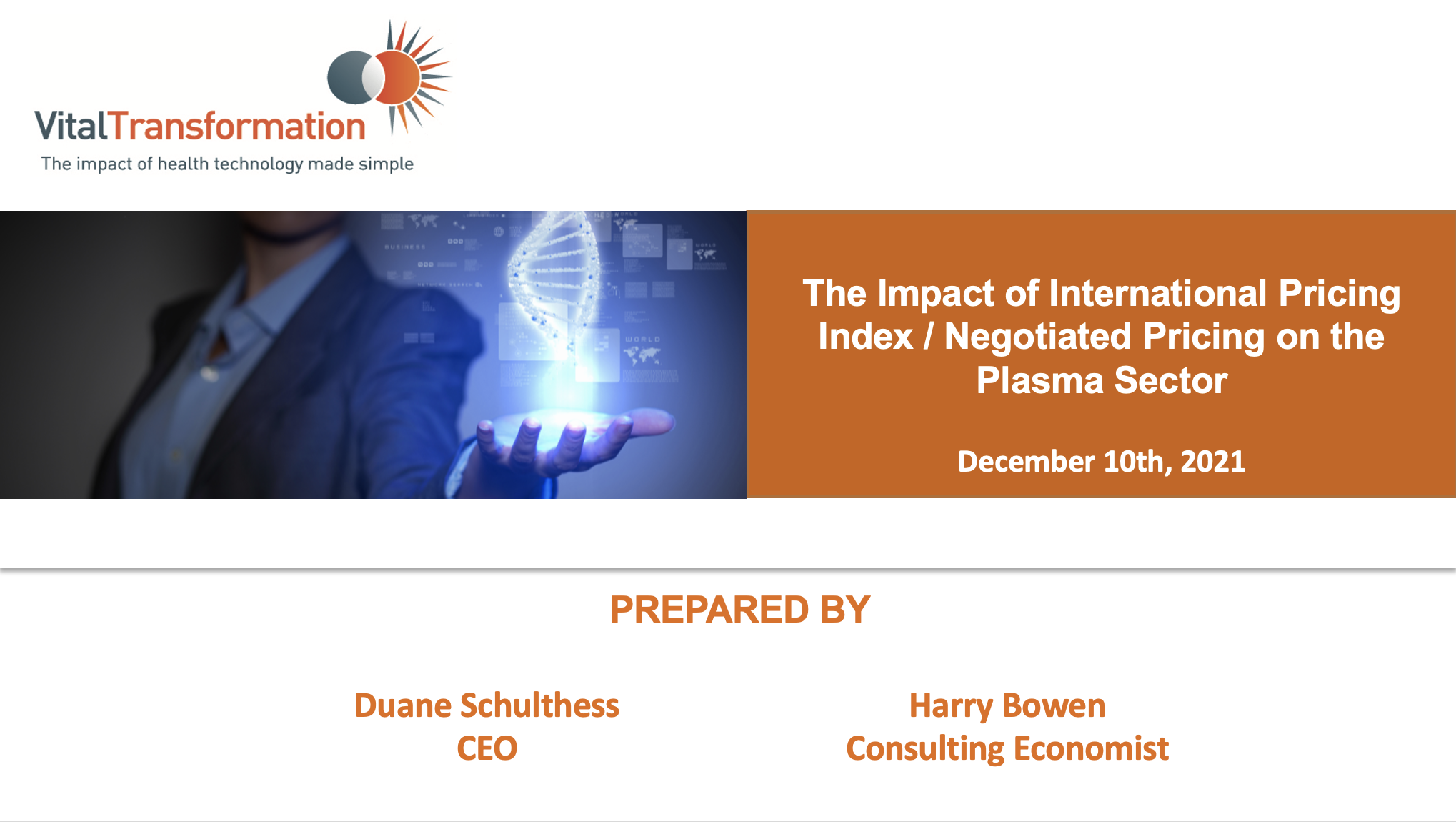Why is the Plasma Industry Different than Biopharma?
Core Findings
The plasma sector is very different from traditional pharmaceuticals. It has very high costs per liter of plasma collected to produce every gram of final product:
- Roughly 1/3rd of all costs are compensation payments to donors.
- Production costs are traditionally more than half of all revenue.
- The sector relies on its ability to collect plasma in the USA, which accounts for 60-80% (depending on the company) of all plasma collected globally.
The entire production process, due to the high cost of raw materials relative to revenues, is dictated by the clinical need for IVIG:
- The economics and nature of the manufacturing process means the industry cannot produce other plasma protein therapies (PPTs) such as Fibrinogen and Albumin unless it can produce and sell IVIG; IVIG is the base for the entire value chain for all PPTs. Impacting the production of IVIG will negatively impact the supply of all PPT products in the portfolio.
The current economic climate for plasma manufacturers
- The plasma sector’s costs have risen by 35% – 50% since 2019, depending on the company, due to several key factors:
-
- COVID-19 has caused people to avoid making donations, this has caused an historic, unprecedented increase in costs associated with donor compensation.
- The Biden Administration’s Customs and Border Protection agency has restricted the ability for cross-border donations from Mexico. This has radically cut donations and caused companies to both divest existing facilities and invest in new facilities away from the US/Mexico border, further increasing costs of production.
- Because of the unprecedented increase in the cost of plasma acquisition, the percentage of total revenue it represents – already almost 49% pre-covid – is now substantially higher.
- In an historically low margin industry, these higher costs have already raised serious patient access concerns, even BEFORE any implementation of the negotiated cost controls now being proposed.
Conclusions
- Unprecedented cost increases – in an industry that already experienced serious patient access challenges in 2019, pre-US border policy and pre-COVID-19 – have put manufacturers under considerable strain worldwide.
- As a majority global plasma donations come from the United States, poorly considered, one-size-fits all reimbursement decisions will substantially increase the risk of patient access concerns and negatively impact the sector globally.
- The plasma industry is subject to many of the same pressures of other industries. As ingredient costs rise and reimbursement falls there must be a point where the viability of that industry is in jeopardy.
Supported by:




